Why the English love their chimneys
The grandeur of English chimneys is a little-studied part of country house architecture but some are quite magnificent
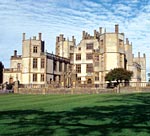

Vanbrugh was sensitive to medieval architectural forms, and it is no coincidence, therefore, that several of his houses possess striking chimneys. Here, at King's Weston, Bristol, Somerset, they are linked by an arcade at roof level to create an additional decorative storey to the building. The roof commands splendid views.
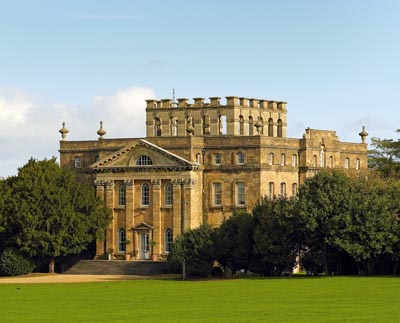
The chimneys at Thornbury in Gloucestershire, probably imitate those at Richmond Palace. This virtuosic triple-shafted example has miniaturised arrow loops and pinnacles. A scroll at the base is inscribed 1514.

Longleat has an extraordinary late-16th-century roofscape punctuated by chimneys and banqueting houses. The English interest in using roofs for recreation was an important incentive for building appropriately magnificent chimneys.
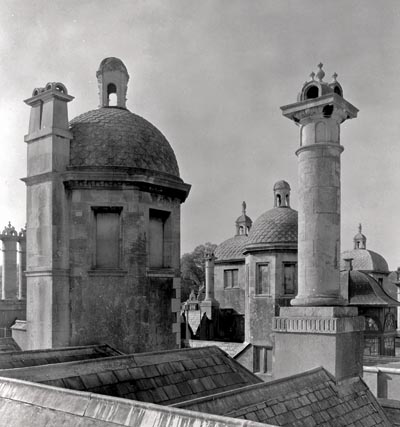
Old House in Hereford (formerly Butchers' Hall) was built in 1612. As is typical in timber-framed buildings, all the chimneys are gathered together for structural reasons into a single stack. Here, they take the culminating form of a miniature castle.
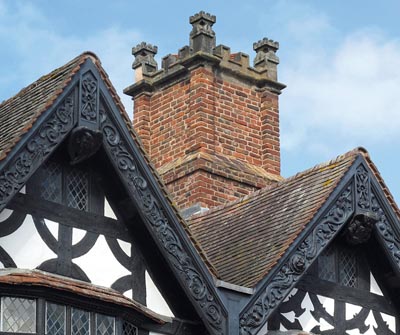
The chimneystacks of Newton Surmaville, Somerset, begun in 1612, create a visual framework for the house. The top of each is surmounted by a detail inspired by grand West Country homes such as Longleat.
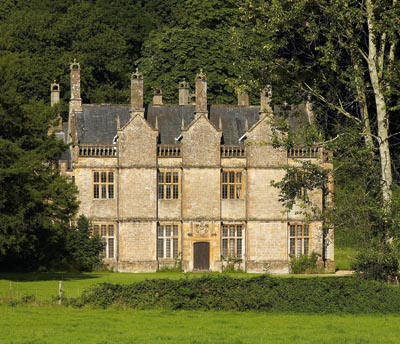
On the leads at Burghley, begun in 1577, chimneys, domes and obelisks create a fantastical forest in architecture. The experience of walking amid these chimneys helps explain why the English were so long resistant to the high-pitched roof.
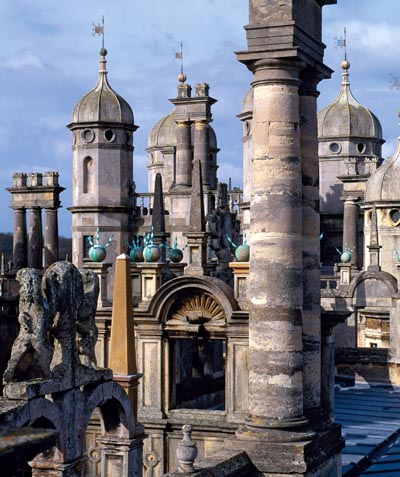
Sherborne Lodge or Castle in Dorset is crowned with an array of free-standing chimneys. Their counter-intuitive position on the angles of the building lends a curiously abstracted quality to the whole design. The lodge was begun in 1593, and extended with flanking wings that imitated the idiom of the original structure in the 1620s.
Sign up for the Country Life Newsletter
Exquisite houses, the beauty of Nature, and how to get the most from your life, straight to your inbox.
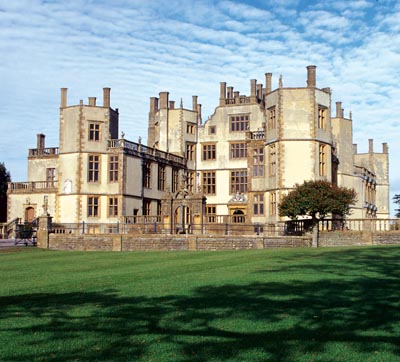
This re-erected chimney at St Briavels in Gloucestershire is probably late 13th century. The horn refers to the castle's role as a hunting lodge. There are parallels for such imagery: crowns surmounted the chimneys of the royal apartments at Conwy in Wales.
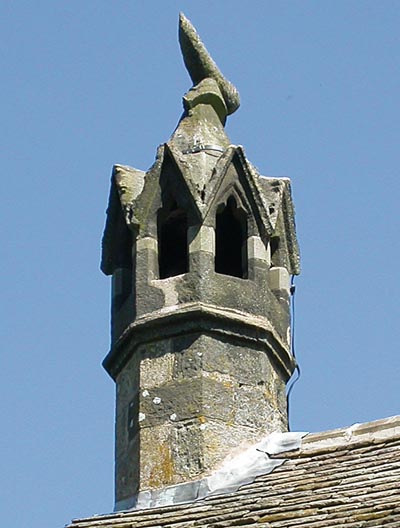
Country Life is unlike any other magazine: the only glossy weekly on the newsstand and the only magazine that has been guest-edited by HRH The King not once, but twice. It is a celebration of modern rural life and all its diverse joys and pleasures — that was first published in Queen Victoria's Diamond Jubilee year. Our eclectic mixture of witty and informative content — from the most up-to-date property news and commentary and a coveted glimpse inside some of the UK's best houses and gardens, to gardening, the arts and interior design, written by experts in their field — still cannot be found in print or online, anywhere else.
-
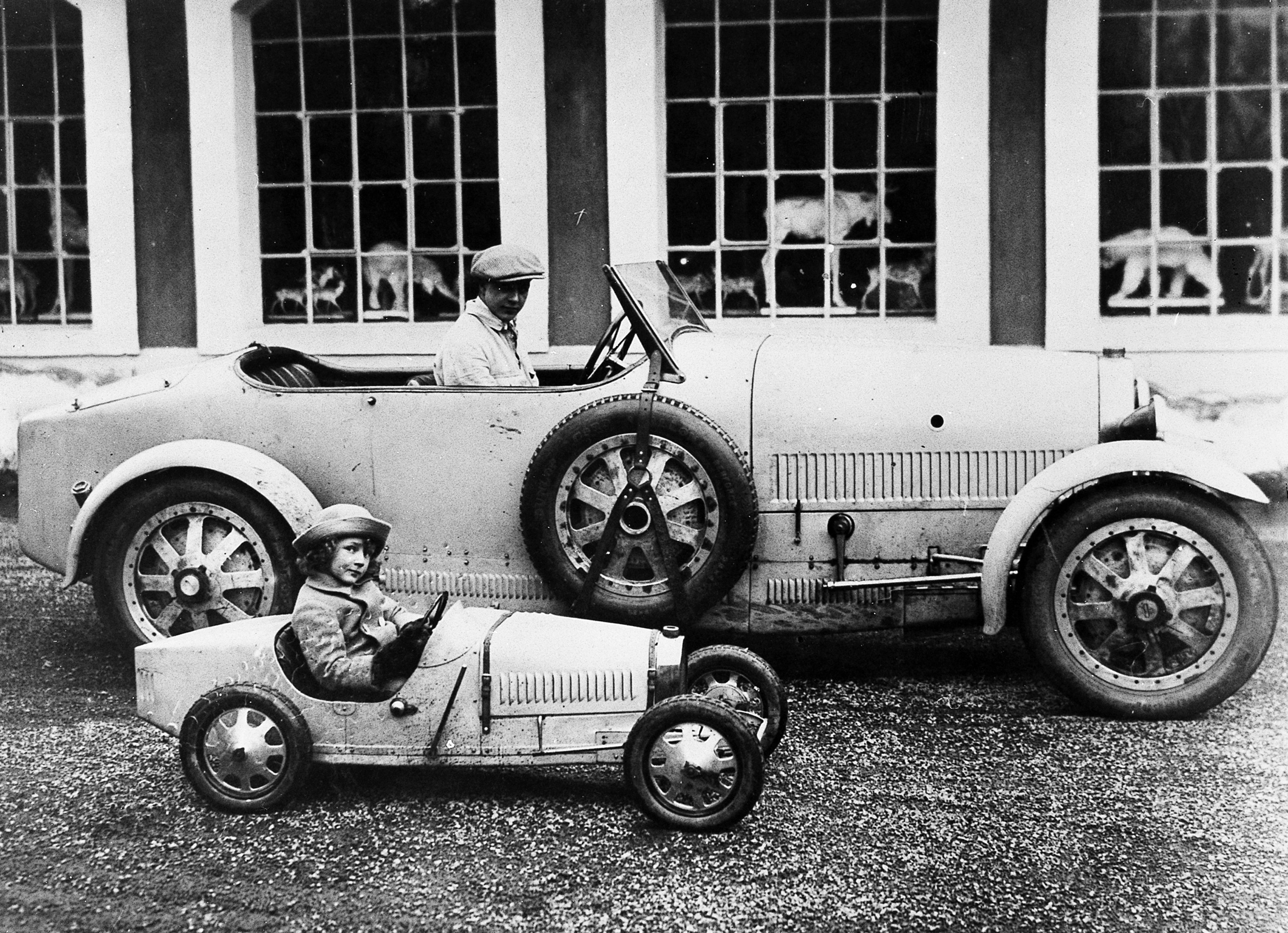 The brilliant Bugattis: Sculpture, silverware, furniture and the fastest cars in the world
The brilliant Bugattis: Sculpture, silverware, furniture and the fastest cars in the worldA new exhibition at this year's Treasure House Fair will shine a light on the many talents of the Bugatti dynasty.
By James Fisher Published
-
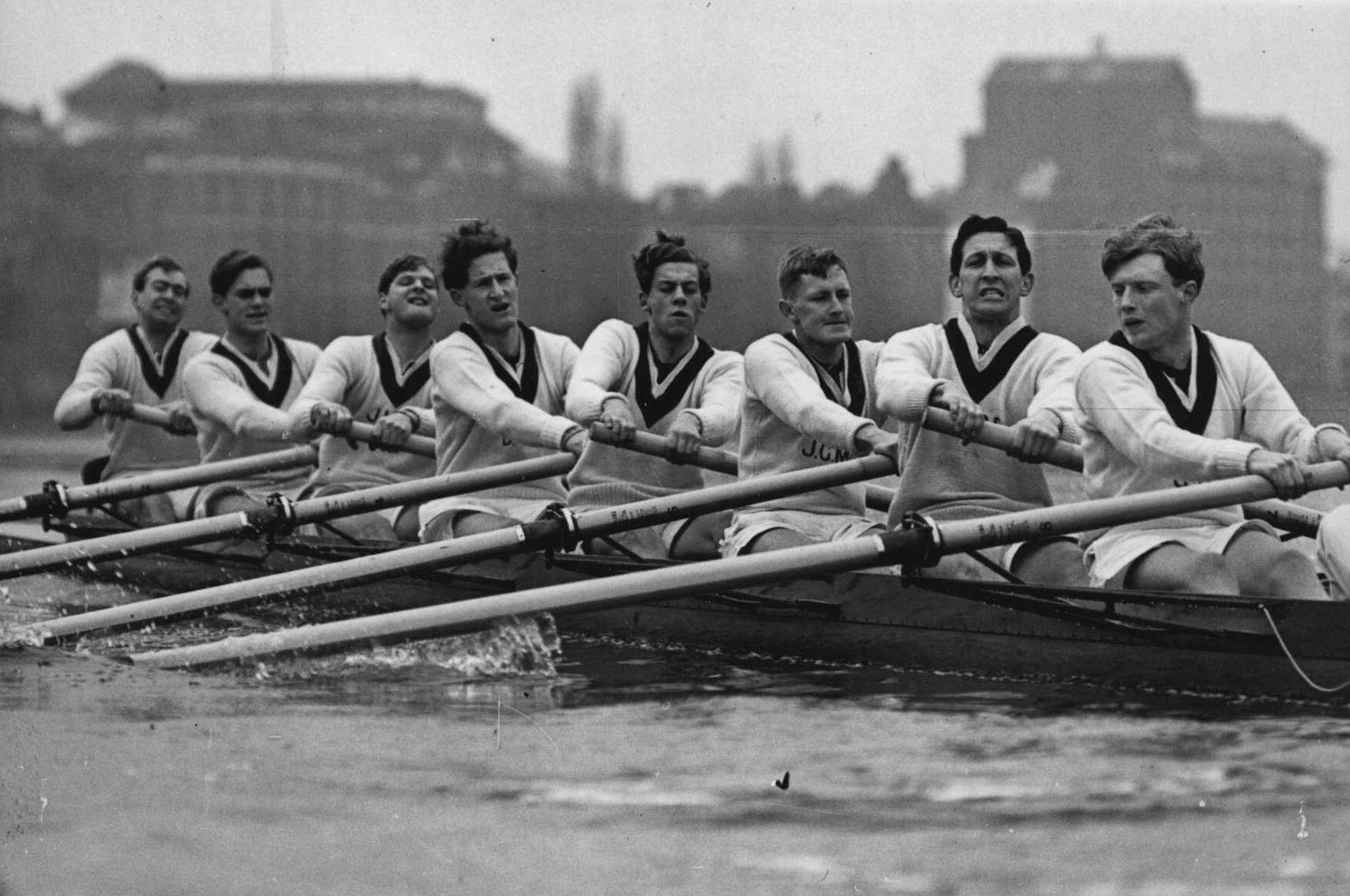 Everything you need to know about one of sport's most gruelling rivalries
Everything you need to know about one of sport's most gruelling rivalriesThis year's Boat Race is expected to play out to a global audience of 100million.
By Amie Elizabeth White Published
